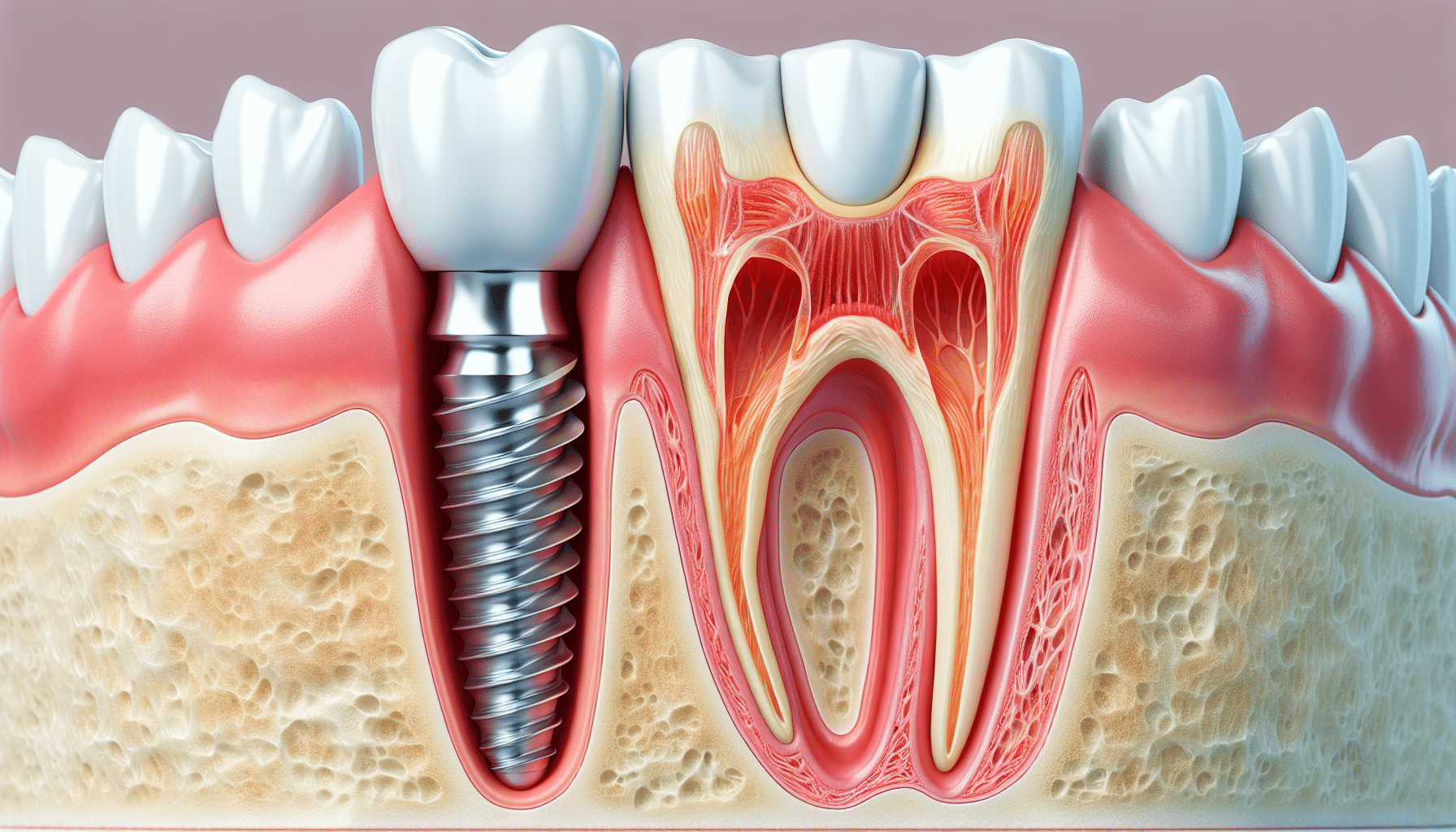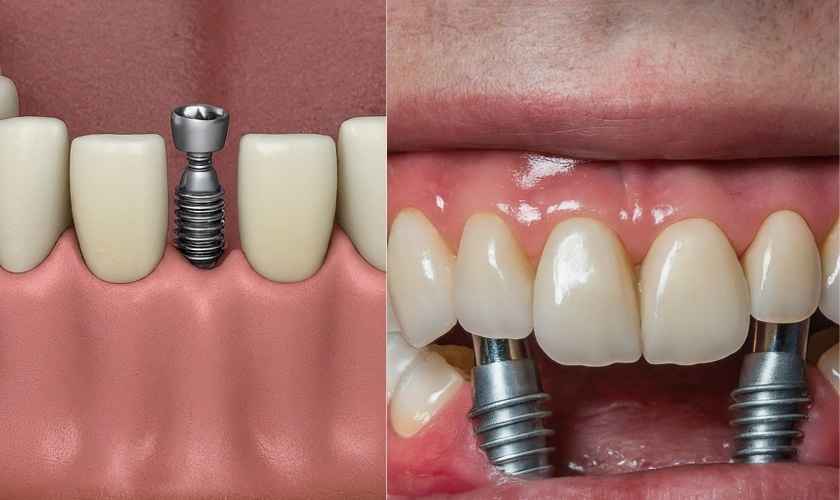7 Simple Techniques For Dental Sense
Table of ContentsThe smart Trick of Dental Sense That Nobody is Talking AboutLittle Known Questions About Dental Sense.10 Simple Techniques For Dental SenseThe Dental Sense Statements
are medical devices operatively implanted into the jaw to recover an individual's capacity to chew or their appearance. They give assistance for synthetic (phony) teeth, such as crowns, bridges, or dentures. When a tooth is shed because of injury or illness, an individual can experience problems such as rapid bone loss, malfunctioning speech, or changes to eating patterns that cause pain.Dental implant systems include an oral implant body and oral implant joint and might also include a joint fixation screw. Root canal procedure. The dental implant body is surgically placed in the jawbone instead of the tooth's origin. The oral implant abutment is typically affixed to the implant body by the joint fixation screw and extends through periodontals right into the mouth to sustain the connected artificial teeth
(https://linktr.ee/dentalsense1)Framework of The Dental Implant System picking dental implants, talk with your oral company concerning the possible benefits and risks, and whether you are a candidate for the treatment. Points to think about: Your total health and wellness is a vital element in identifying whether you are a good candidate for dental implants, for how long it will take to recover, and for how long the dental implant may remain in area.
Smoking might affect the healing procedure and reduce the long-lasting success of the implant. The recovery process for the dental implant body may take numerous months or longer, throughout which time you generally have a momentary abutment instead of the tooth. the oral implant procedure: Thoroughly follow the oral hygiene guidelines provided to you by your dental provider.
Dental Sense - Questions
Implant failure can lead to the requirement for another surgery to repair or change the dental implant system. Restores the capability to eat Restores cosmetic look Assists maintain the jawbone from shrinking as a result of bone loss Protects the health and wellness of the surrounding bone and periodontals Helps maintain surrounding (close-by) teeth secure Boosts lifestyle Damage to surrounding all-natural teeth during dental implant positioning Injury to the surrounding tissues throughout surgical procedure, such as sinus opening Injury during surgical treatment (as an example, crack of surrounding jawbone) Inadequate feature, such as seeming like the teeth do not attack with each other generally A sensation that the tooth is loose or turning in area arising from an abutment screw loosening Implant body failure (looseness of the implant body) because of systemic infection, which may be most likely in patients with unchecked diabetes mellitus due to local infection in bone and gums supporting the dental implant body as a result of delayed recovery, which may be a lot more likely in clients that smoke Problem cleaning up the gum tissues around the dental implant, resulting in inadequate dental health Without treatment periodontal disease Post-surgical numbness as a result of nerve impingement or damage Constantly notify healthcare suppliers and imaging professionals that you have oral implants prior to any type of magnetic resonance imaging (MRI) or x-ray procedures.
FDA is not aware of any damaging occasions reported for MRI or x-ray treatments with dental implants. Dental implants systems are commonly made of products that follow global agreement standards of the International Organization for Standardization (ISO) or ASTM International. These requirements have information of what makes a safe product.

An oral implant is a structure that changes a missing out on tooth. With screw-like tools, the doctor inserts an implant into the jawbone, and it acts as an anchor for a man-made tooth, called a crown.
9 Easy Facts About Dental Sense Explained
Some people are not eligible for oral implant surgery. It is for oral surgeons to operate individuals with: acute illnessuncontrollable metabolic diseasebone or soft tissue illness or infectionIf these issues are settled, a person can have the surgical treatment. In, oral cosmetic surgeons avoid operating people with: If people with any of the above go through dental implant surgery, there is a greater threat of the dental implant failing.

Oral implant surgical treatment is a customized process. It's not the same for everyone. The complying with offers a basic review of what you can anticipate your dental professional, oral surgeon, periodontist or prosthodontist to do: Position the implant surgically. Give you time to heal. Affix the post and last crown, bridge or denture.
Next off, your cosmetic surgeon will very carefully put the oral implant right into your jaw. If your dental implant is near the front of your mouth, your dental professional will certainly make a temporary tooth for you to put on up until you heal.
The smart Trick of Dental Sense That Nobody is Talking About
Your supplier can inform you what to expect in your situation. Throughout the recovery phase, your jawbone ought to fuse to the oral implant. This procedure, called osseointegration, is vital for security and lasting success. This process can take anywhere from three to 9 months. In many cases, it may take longer.
Once your dental implant heals, your dental practitioner can attach the joint (little connector message) and your final remediation (crown, bridge or denture). This normally takes concerning one hour to complete and may call for a second minor surgical procedure. You shouldn't feel any pain during your dental implant treatment since your provider will make use of drug to numb your gum tissues.